
|
Colonial economy 17-18th centuries: mining and mercantilism; �subsistence and local markets
Mining and mercantilism: the imperial view
- Mercantilism--bullionism, monopolies, and controls
- Silver production and the transformation of trans-Atlantic trade
- Decline of the Carrera de Indias (fleet system)
Subsistence and markets: emergence of local, regional and colonial markets
- Mundane products: grains, livestock, textiles, hides
- Multiplicity of land holdings: villages, ranchos, haciendas, estancias
- Population growth spurred land conflicts, intensification of production, and proto-industry
Economy of early Spanish America: feudal, capitalist, or patrimonial?
|
 |
Parenthesis: Bartolome de las Casas’�changing view on slavery
Remedios (1516): the owners should be compensated by “allowing them to hold Negro and white slaves that they can bring from Castille.”
Historias (1526-29), vol. 3 p. 275: “The clérigo Casas soon repented of the advice he had given, judging he had been guilty of carelessness, for as he later saw and ascertained the slavery of the blacks was as unjust as that of the Indians…”
On human rights (Historias v.1:117): “The natural laws and rules and the laws of the rights of peoples are common to all nations, Christian and gentile, and of whatever sect, law, color, and condition they may be, without any difference.”
|
 |
Mining and mercantilism: �the imperial view: �Jose del Campillo y Cossio, New System of Economic Government of America, 1743: factories and industries “must absolutely be forbidden in America.”
Mercantilism--
- Bullionism, gold and silver as the basis of wealth and empire
- Monopolies: commercial trading houses
- Imperial Controls: restrictions on routes, goods, etc.
Silver production and the transformation of trans-Atlantic trade
- decline of silver production in 17th century
- attacks from Dutch, French and English
Decline of the Carrera de Indias (fleet system)
- 1554-1740: 2 fleets per year (Veracruz, Panama)
- Lost only one fleet (1628), but extremely costly
|
 |
Carrera de Indias (colonial convoy system):�bullion from colonies, merchandise from Spain (often from N. Europe): �(Burkholder and Johnson, p. 144)
17th c. decline�1600-: 6,573 ships�1650-: 1,835
Intrusions: Dutch (1590) English (1655) French (1665)
End of great fleets (1748, 1776)
Opening of ports (1764, 1778)
|
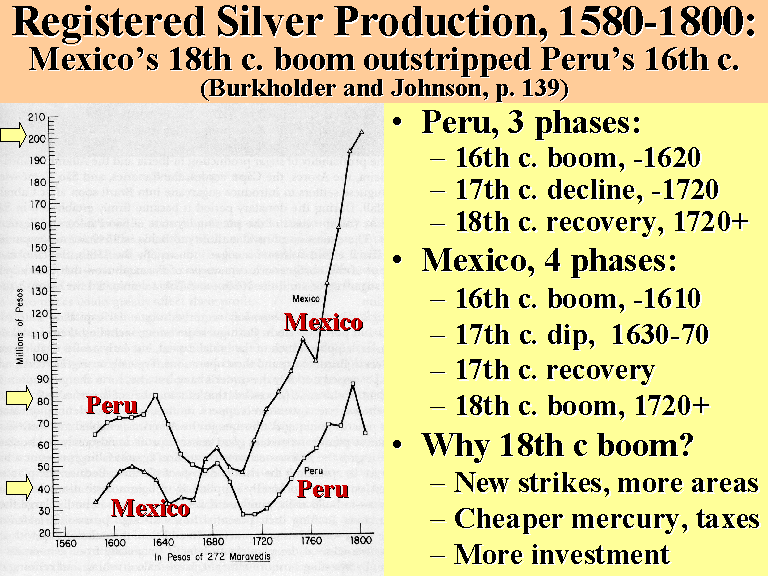 |
Registered Silver Production, 1580-1800: Mexico’s 18th c. boom outstripped Peru’s 16th c.�(Burkholder and Johnson, p. 139)
Peru, 3 phases:
- 16th c. boom, -1620
- 17th c. decline, -1720
- 18th c. recovery, 1720+
Mexico, 4 phases:
- 16th c. boom, -1610
- 17th c. dip, 1630-70
- 17th c. recovery
- 18th c. boom, 1720+
Why 18th c boom?
- New strikes, more areas
- Cheaper mercury, taxes
- More investment
|
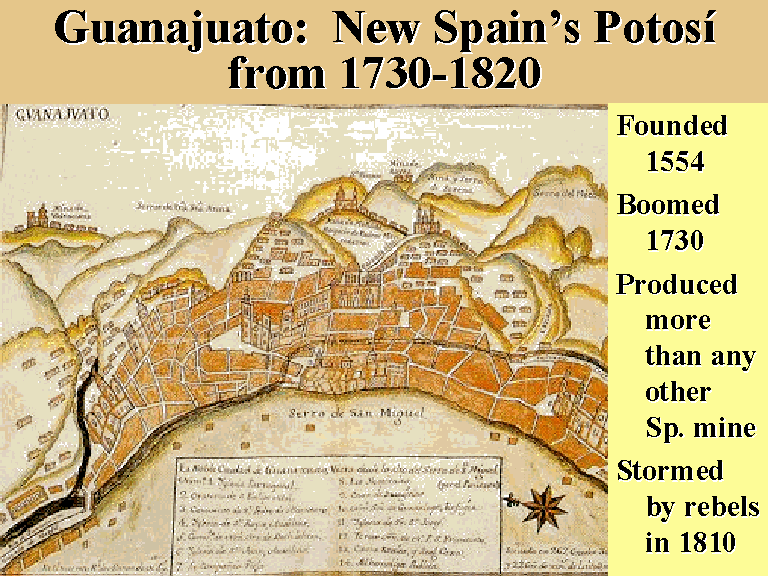 |
Guanajuato: New Spain’s Potosí�from 1730-1820
Produced more than any other Sp. mine
Stormed by rebels in 1810
|
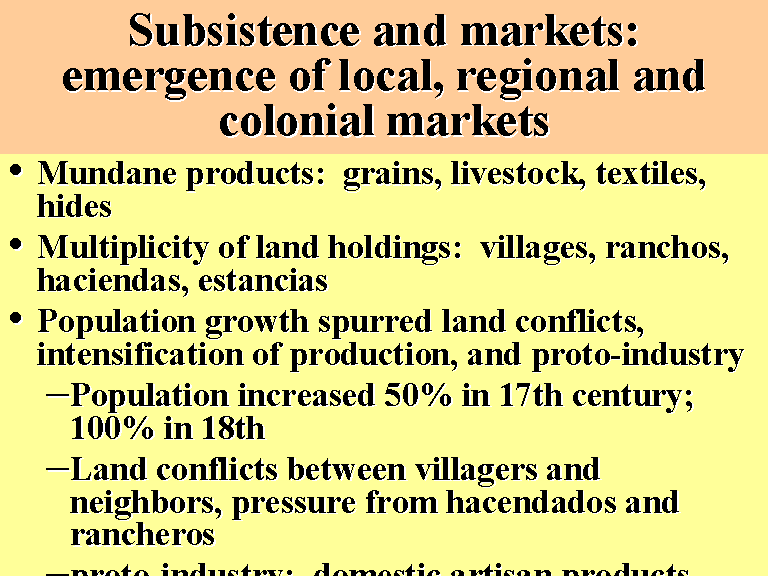 |
Subsistence and markets: �emergence of local, regional and colonial markets
Mundane products: grains, livestock, textiles, hides
Multiplicity of land holdings: villages, ranchos, haciendas, estancias
Population growth spurred land conflicts, intensification of production, and proto-industry
- Population increased 50% in 17th century; 100% in 18th
- Land conflicts between villagers and neighbors, pressure from hacendados and rancheros
- proto-industry: domestic artisan products
|
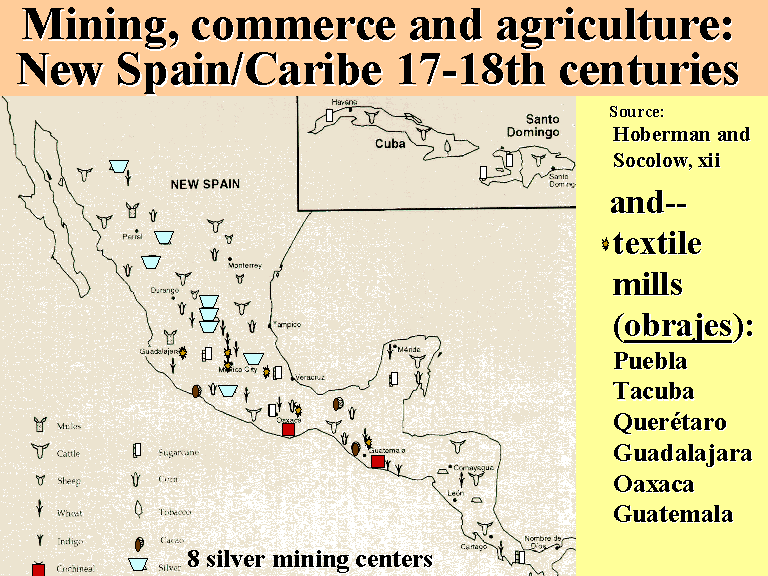 |
Mining, commerce and agriculture: �New Spain/Caribe 17-18th centuries
Source: Hoberman and Socolow, xii
and--�textile mills (obrajes):�Puebla�Tacuba�Querétaro�Guadalajara�Oaxaca�Guatemala�
|
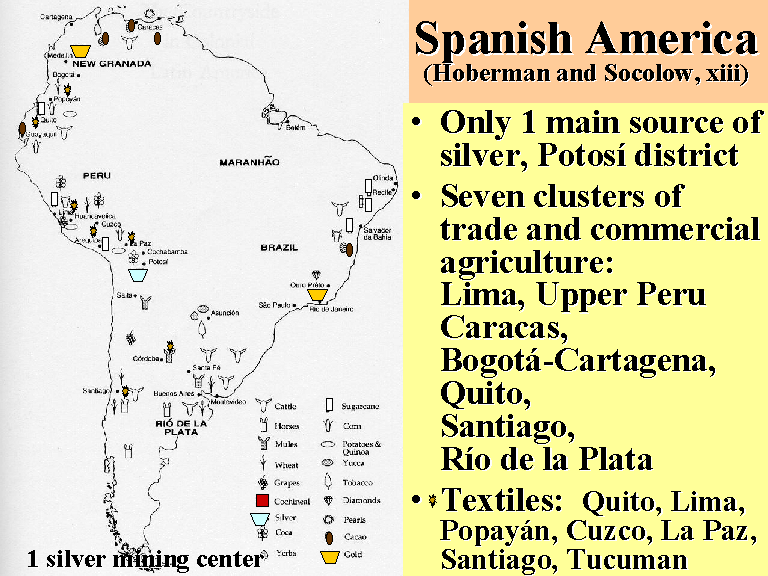 |
Spanish America �(Hoberman and Socolow, xiii)
Only 1 main source of silver, Potosí district
Seven clusters of trade and commercial agriculture:�Lima, Upper Peru�Caracas, �Bogotá-Cartagena,�Quito, �Santiago, �Río de la Plata
Textiles: Quito, Lima, Popayán, Cuzco, La Paz, Santiago, Tucuman
|
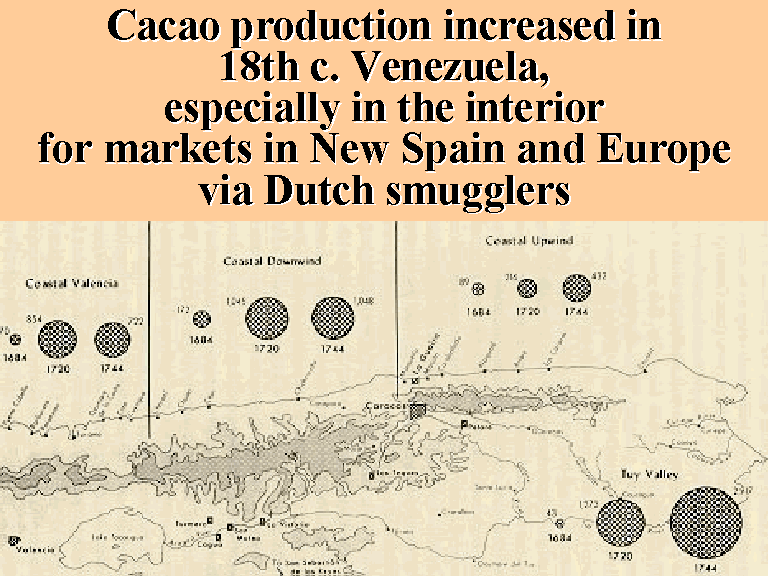 |
Cacao production increased in �18th c. Venezuela, �especially in the interior�for markets in New Spain and Europe via Dutch smugglers
|
 |
Tithes (agricultural production): Charcas (Upper Peru), 1670-1820�(millions of pesos, log scale)
3 phases: stagnation (1670-1710), bust (1720-40), recovery and growth (1740-1810)
|
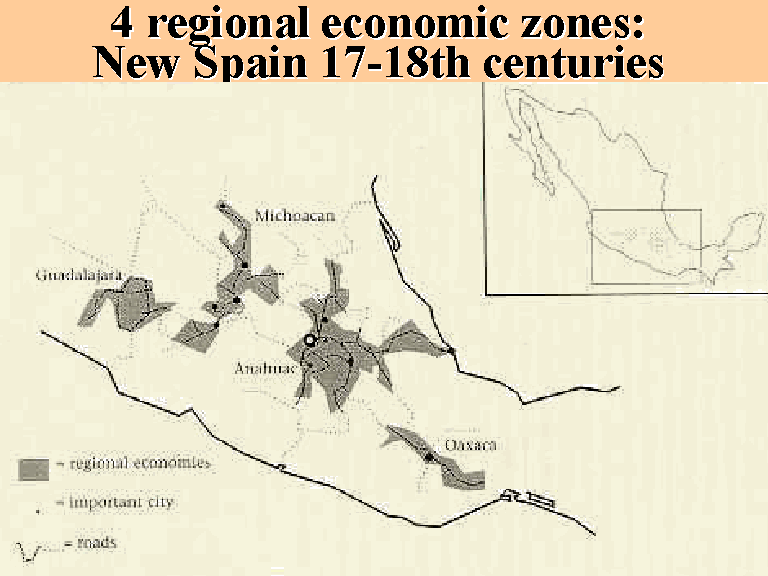 |
4 regional economic zones: �New Spain 17-18th centuries
|
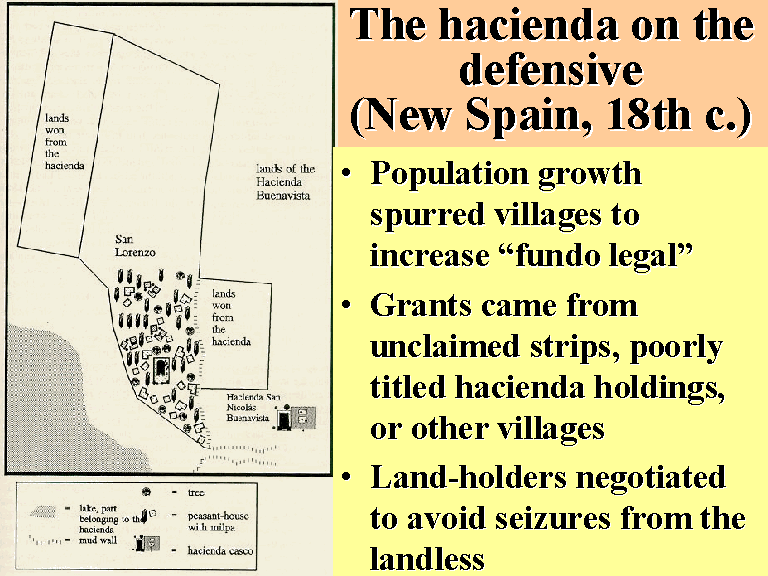 |
The hacienda on the defensive �(New Spain, 18th c.)
Population growth spurred villages to increase “fundo legal”
Grants came from unclaimed strips, poorly titled hacienda holdings, or other villages
Land-holders negotiated to avoid seizures from the landless
|
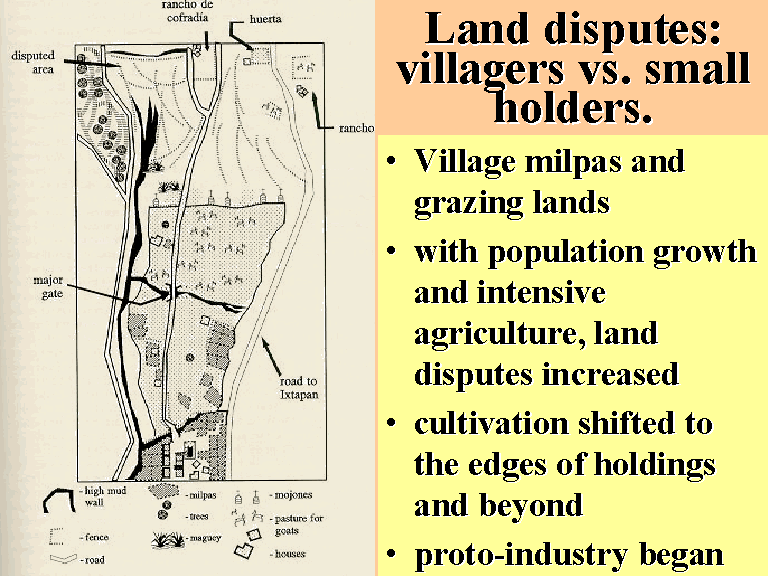 |
Land disputes: villagers vs. small holders.
Village milpas and grazing lands
with population growth and intensive agriculture, land disputes increased
cultivation shifted to the edges of holdings and beyond
|
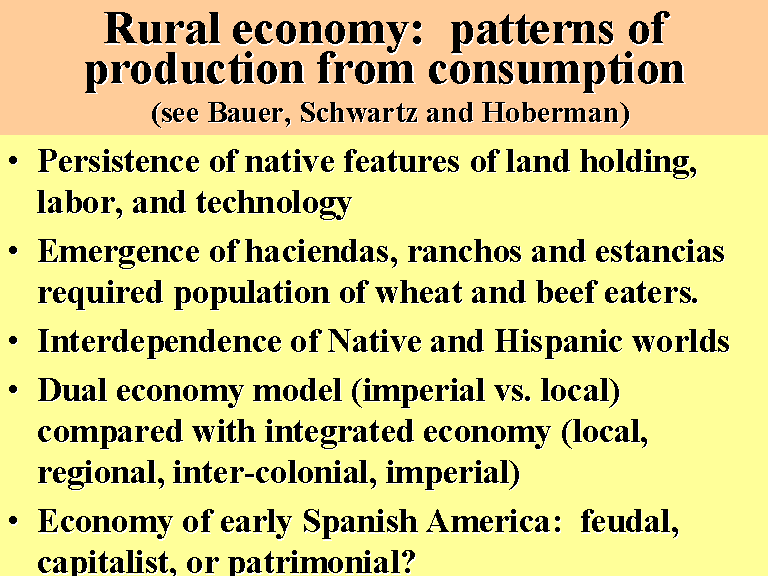 |
Rural economy: patterns of production from consumption� (see Bauer, Schwartz and Hoberman)
Persistence of native features of land holding, labor, and technology
Emergence of haciendas, ranchos and estancias required population of wheat and beef eaters.
Interdependence of Native and Hispanic worlds
Dual economy model (imperial vs. local) compared with integrated economy (local, regional, inter-colonial, imperial)
Economy of early Spanish America: feudal, capitalist, or patrimonial?
|
 |
End
|















